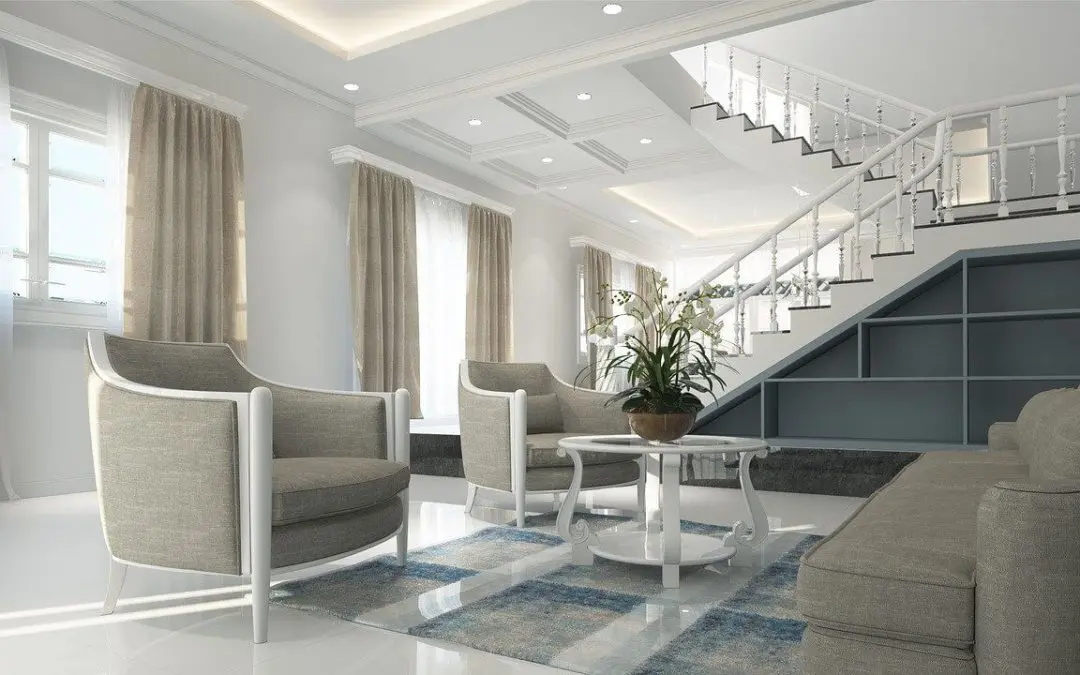Creating a beautiful and functional living space is both an art and a science. Whether you’re starting from scratch or want to refresh your home, these interior design tips will help you achieve a harmonious and stylish environment.
Understand Your Space
Before diving into design decisions, take time to understand your space. Consider the size of each room, the amount of natural light, and how you use each area. This understanding will guide your furniture, colors, and decor choices so that each element fits seamlessly into your home.
Choose a Color Palette for Your Interior Design
A cohesive color palette sets the tone for your home. Start with a base color that reflects the mood you want to create—calm and serene, vibrant and energetic, or cozy and warm. Then, choose complementary colors for accents and secondary elements. Remember that lighter colors make a space feel larger, while darker tones add intimacy and drama.
Mix Textures and Materials
Incorporating a variety of textures and materials adds depth and interest to your interiors. Combine smooth surfaces like glass and metal with softer elements such as plush fabrics and natural wood. This mix creates a balanced and inviting atmosphere. For example, pair a sleek leather sofa with a chunky knit throw and a wooden coffee table to achieve a well-rounded look.
Focus on Furniture Placement in Interior Design
Furniture arrangement plays a crucial role in a room’s flow and functionality. Begin by identifying the space’s focal point, such as a fireplace, a large window, or a statement piece of art. Arrange your furniture to highlight this feature, ensuring ample space for movement. Consider traffic patterns and avoid placing large pieces in pathways.
Layer Lighting
Lighting is an essential aspect of interior design that can transform a space. Use a combination of ambient, task, and accent lighting to create a well-lit and dynamic environment. Ambient lighting provides general illumination, task lighting is practical for specific activities, and accent lighting highlights architectural features or artwork. Dimmer switches allow you to adjust brightness to suit different occasions and moods.
Incorporate Personal Touches
Your home should reflect your personality and tell your story. Incorporate personal touches through artwork, photographs, and cherished objects. Display collections or souvenirs from travels to add character and make your space uniquely yours. These elements add visual interest and create a sense of warmth and familiarity.
Embrace Greenery
Adding plants to your interior design brings life and color into your home. Greenery can improve air quality and create a calming atmosphere. Choose plants that suit your lifestyle and the conditions of your space, whether it’s low-light succulents or sun-loving ferns. Stylish planters and plant stands can further enhance your decor.
Interior Design Requires You to Balance Scale and Proportion
Achieving balance in scale and proportion ensures that your room feels harmonious. Mix large and small pieces to create visual interest but maintain a sense of equilibrium. For example, a large sofa can be balanced with a sizable coffee table, while smaller side tables and accessories complement the arrangement without overwhelming it.
Invest in Quality Pieces
While cutting corners with budget-friendly options is tempting, investing in high-quality furniture and decor pays off in the long run. Durable, well-made pieces look better and last longer, saving you money over time. Prioritize essential items like sofas, dining tables, and mattresses, where comfort and longevity are paramount.
Edit and Simplify
Less is often more in interior design. Avoid overcrowding your space with too many items, which creates a cluttered and chaotic feel. Instead, curate your decor carefully, choosing pieces that add value and beauty. Regularly edit your belongings to maintain a clean and organized home, ensuring each item has a purpose and place.
Interior design is a journey of discovery and creativity. By understanding your space, choosing a cohesive color palette, mixing textures, and incorporating personal touches, you can create a stylish and functional home. Remember to balance scale, invest in quality pieces, and organize your space. With these tips, you’ll be well on your way to designing a beautiful and inviting home.
Interior Design FAQs
What are the best ways to make a small room look larger?
To make a small room look larger, use light colors on walls and furniture, as they reflect light and create an airy feel. Incorporate mirrors to expand the space visually. Opt for multi-functional furniture, like ottomans with storage or wall-mounted desks. Keep the room clutter-free and use vertical space by installing shelves or hanging artwork higher on the walls.
How do I choose the right size rug for my room?
Choosing the right size rug depends on the layout and function of the room. In a living room, ensure the rug is large enough to fit under the front legs of all major furniture pieces, creating a cohesive look. In a dining room, the rug should extend at least 24 inches beyond the table to accommodate chairs. For bedrooms, a large rug that extends beyond the bed on all sides adds warmth and comfort.
What are some tips for designing a functional home office?
Designing a functional home office requires careful planning. Choose a quiet location with minimal distractions. Invest in a comfortable, ergonomic chair and a desk that suits your work style. Ensure proper lighting, both natural and artificial, to reduce eye strain. Organize your space with storage solutions like shelves, filing cabinets, and desk organizers to keep your workspace clutter-free and efficient.
What are some eco-friendly interior design tips?
By using sustainable materials like bamboo, reclaimed wood, and recycled glass. Choose energy-efficient lighting and appliances. Opt for low-VOC (volatile organic compound) paints and finishes to improve indoor air quality. Incorporate vintage or second-hand furniture to reduce waste. Add plants to your space for natural air purification and a touch of greenery.
Professional Inspection Network provides home inspection services to customers in Southern California. Contact us to request an appointment.

